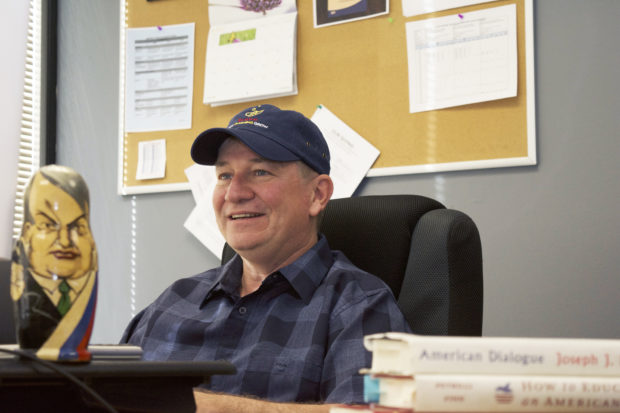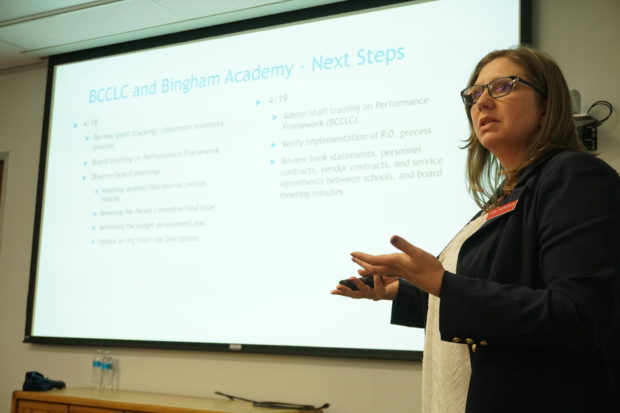Idaho charter schools still stir debate, but the debate has shifted over the years.
After more than 20 years of operation, the schools are here to stay — a reality that’s taken traditional educators’ concerns about charters largely from whether they should be allowed to operate, to how to effectively manage their growth.
Concerns about growth come as thousands of students flocked to charters during the coronavirus pandemic.
Idaho law doesn’t cap the number of charters that operate within its borders. Some traditional educators see that as a threat in a state that carves up K-12 funds through a formula based on average student attendance. As charters grow, so does their share of precious K-12 tax dollars.
The situation has prompted pushback from districts, from marketing efforts to attract and retain students to legislative proposals aimed at limiting the number of students charters can take in.
Meanwhile, charter advocates say expansion injects competition and innovation into public education, and provides a cost-effective way of absorbing year-to-year influxes of students in one of the nation’s fastest growing states.
Concerns about growth
Traditional school leaders have for years lamented losing students and funding to charters.
In 2018, the Boise School District launched an unusual marketing campaign to combat charter expansion. Last year, the Caldwell and Payette districts lobbied unsuccessfully for a bill to limit charters to one school per 25,000 people living in a school district. Similar proposals have surfaced unsuccessfully over the years.
Caldwell’s attempt to cap local charter seats was misconstrued as “anti-charter,” an “oversimplification of a complex process,” school board chair Marisela Pesina told EdNews.
“As a state, we need a dialogue about charter concentration in communities,” she said, lamenting the authorization of Caldwell-area charters that “offer duplicative services that create inefficient use of limited public resources.”
For Pesina, part of the issue lies with Idaho’s evolving charter laws. The state’s original charter legislation limited the number of charter schools allowed, but the law has since changed.

Today, Idaho is one of at least 20 states with no law capping charter growth, according to the Education Commission of the States.
“As the law evolves, we see a need to talk about how saturation of community with charters impacts its existing schools — traditional public and charter schools,” said Pesina.
Bluum, a statewide charter support group backed by the J.A. and Kathryn Albertson Family Foundation, leads the way in the state’s charter expansion efforts. But it’s not a free for all, CEO Terry Ryan said.
Factors such as local population growth and impacts on district enrollments influence decisions to start or grow a school.
“We try to support schools where we think the need is greatest,” Ryan told EdNews.
Charters are also a benefit, not a burden, to a state grappling with areas of rapid population growth, Ryan added. Funds obtained for charter facilities come largely through private donations and federal grants, not costly bond issues that can drive up local property taxes.
Monitoring charter growth

Idaho law may cater to charter expansion, but growth is monitored, according to Idaho Public Charter School Commission Director Jenn Thompson.
Charter “saturation” becomes a concern for the commission when about 15 percent of students living within a district attend charters, Thompson told EdNews last year.
Most districts — including Caldwell and Boise — aren’t there yet. Statewide, around 10 percent of Idaho students attend charter schools.
Still, the number does fluctuate from district to district. The Blackfoot School District, in East Idaho, has the highest percentage of local students attending charters, at nearly 21.5 percent, according to the commission’s latest tally. A year earlier, the number peaked at more than 27 percent.
Here’s a rundown of yield rates in the state’s largest districts where charters operate:
- Boise: 8.9 percent
- Bonneville: 8.4 percent
- Nampa: 16.9 precent
- Pocatello-Chubbuck: 9.5 percent
- Coeur d’Alene: 5.8 percent
- Idaho Falls: 8.7 percent
Other districts with yield rates near Thompson’s 15 percent threshold include Moscow (14.3 percent), Gooding (14 percent) and Fruitland (15.1 percent).
The following map details where Idaho’s charter schools are — and aren’t — located. Click to zoom in or use the search function to find individual schools.
Disclosure: Bluum and Idaho Education News are both funded by the J.A. and Kathryn Albertson Family Foundation. The foundation does not influence EdNews’ editorial content.
“More choices, more challenges” is an in-depth look at the robust effort to expand Idaho charter schools. The series considers what the well-funded push means for Idaho families and leaders and how the state is adapting to the growth. EdNews data analyst Randy Schrader provided data and information for this series. The series, at a glance:
Monday
Tuesday
- Idaho charters still stir debate
Wednesday
Thursday
Friday
